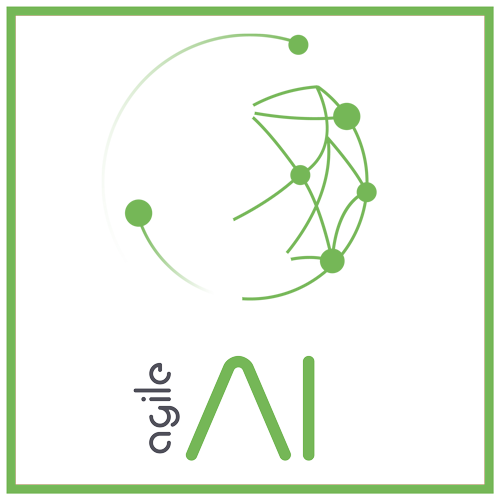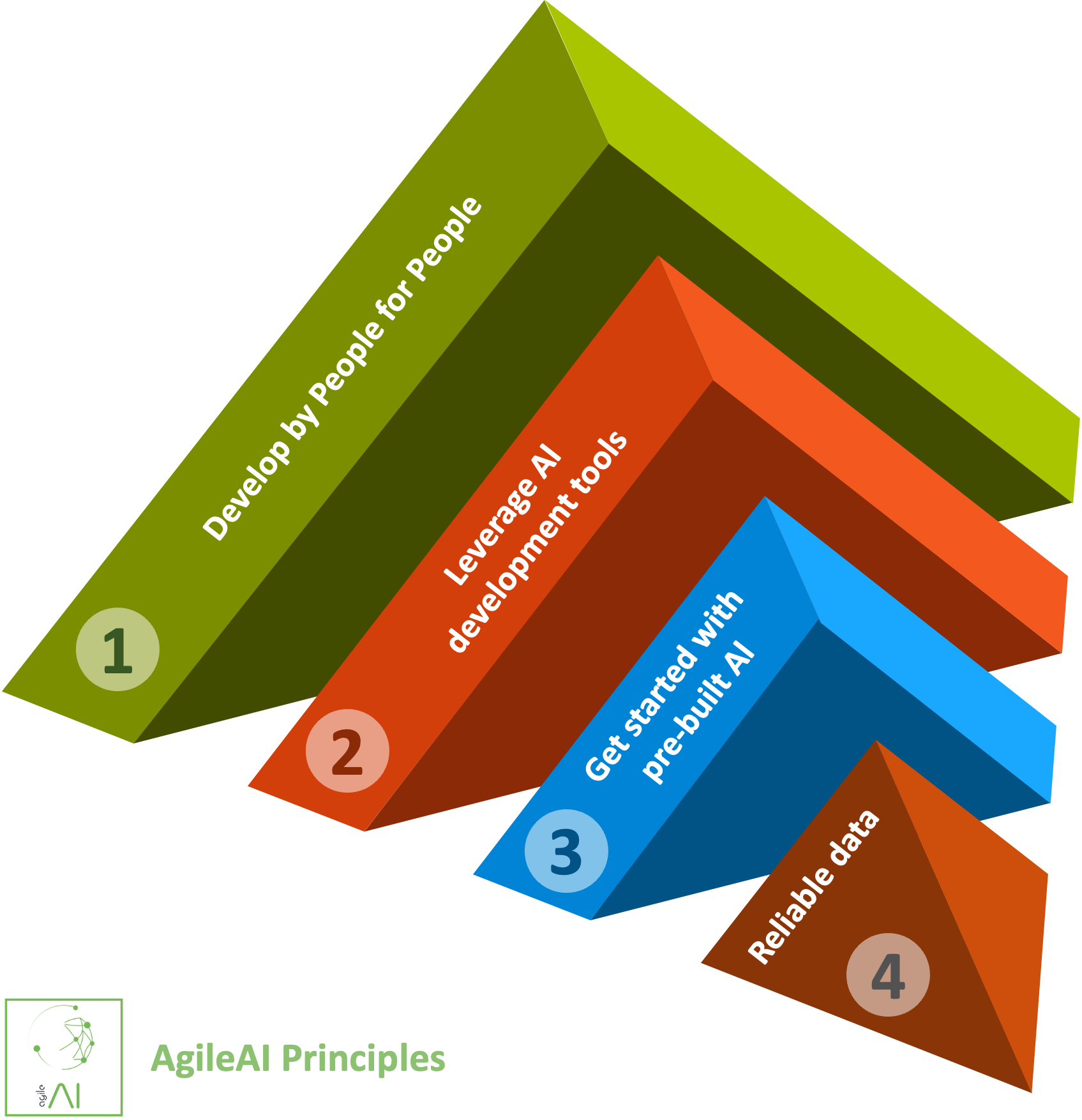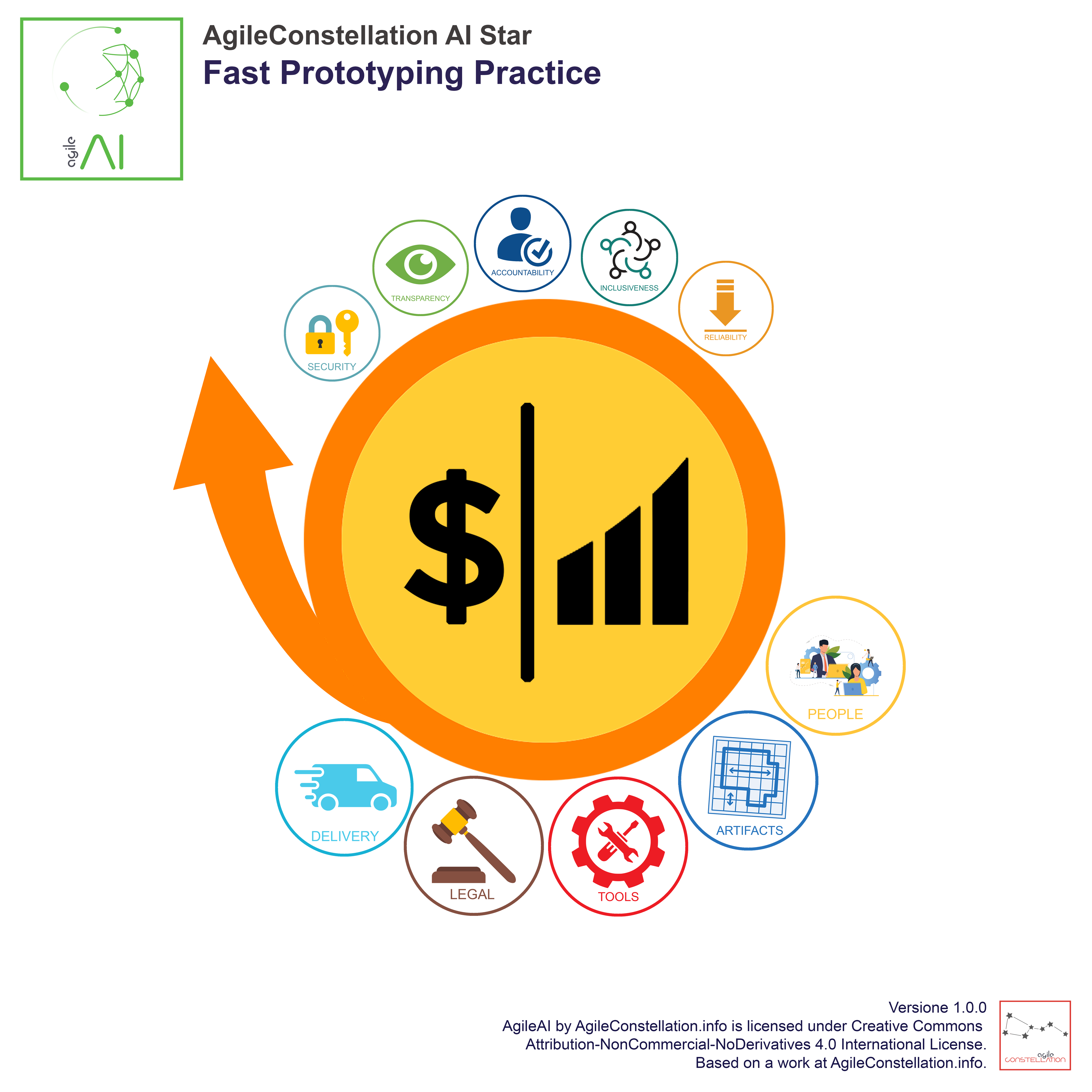
Artificial Intelligence tools become more powerful every day and are progressively able to strategically support different business dynamics. There is therefore the opportunity to exploit a huge amount ofdata, unimaginable until a few years ago, to improve the different operational workflows, optimizing costs and improving overall performance, and also to develop new innovative services that will not increase customer satisfaction with the company.
AgileAI was created to address this need, combining the principles of Agile with the capabilities of AI to improve human-machine collaboration and accelerate innovation.
AgileAI is based on an adaptive and collaborative approach, where AI agents are not just tools, but active team members, capable of contributing to analysis, development and continuous improvement. The framework is based on three pillars:
- Human-AI collaboration: AI does not replace humans, but supports them in making decisions and accelerating processes.
- Adaptability and Optimization: the workflow is continuously recalibrated by AI agents based on progress, business priorities and emerging needs.
- AI-Ethical and Transparent Development: AgileAI ensures that the use of artificial intelligence is understandable, reliable, and ethically compliant.
In addition to the principles "inherited" from the AgileConstellation funnel, AgileAI defines 4 more that look specifically at the aspects relating to the data and the associated analysis algorithms:
- Develop by People for People, develop any intelligence system for people, not to replace them in decisions.
- Leverage the development tools, constantly improve what has been achieved, without fear of modifying something that works.
- Get started with pre-built Al, before embarking on the creation of something new, analyze the market solutions, or internal ones, available.
- reliable date, only with reliable and updatable data can artificial intelligence systems provide valuable analyses.

Compared to inherited practices, the Fast Prototyping practice is enriched with 5 new reference aspects (bubbles) which, overall, go under the acronym STAIR:
- Security, protect information and ensure high levels of privacy
- design intelligent systems to anonymize data and maintain its integrity
- protect the system from external attacks
- conduct regular security and privacy reviews
- Transparency, clearly support organizational decisions
- share the key elements
- exploit understandable models and have intelligible explanations of the behavior of the model itself
- train people on how to interpret the suggestions
- Accountability, awareness of decision-making responsibility
- clarify responsibilities
- make sure people are properly trained to use the results correctly
- keep people at the heart of decision making
- Inclusiveness, valuing different points of view
- human experience, automated analysis
- attract a diverse pool of talent
- research and use best practices, analytical techniques and best tools
- Reliability, operate reliably, safely and consistently under all conditions
- review of support systems for anticipated and unforeseen circumstances
- provide detailed explanations of how the system works
- adequately report performance problems




